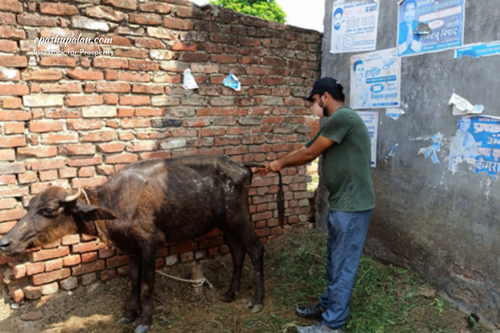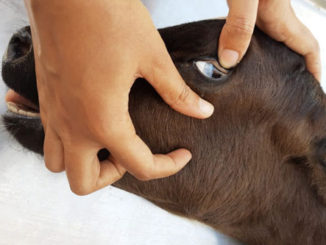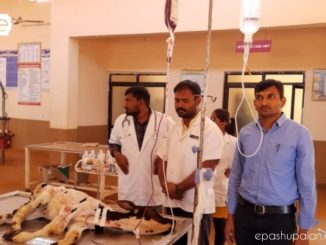This is the story of Ganga Bairaj region, Kanpur, U.P. in the era of COVID-19 where haemoprotozoan diseases had become the bottleneck in the cattle and buffalo. I can remember, those were the days when the progressive farmers from Ganga bairaj region were facing great loss not only due to COVID 19 but also due to Haemoprotozoan diseases like Trypanosomiasis and Theileriosis in cattle and buffalo. Other day, some clients from Ganga Bairaj region approached me and then with the guidance of my other seniors and colleagues, I managed myself to visit their livestock after taking all the COVID 19 precautions as much as possible.

After reaching there, I started my diagnosis and I got to know that almost whole region of Ganga Bairaj was suffering with this problem of haemoprotozoan diseases in their livestock. Therefore, I started my treatment in almost 20 progressive farmers’ house who were in great loss. Because, Haemoprotozoan diseases are one of the major problems in cattle transmitted by arthropod vectors or through blood transfusion, which the farmers face mainly with arrival of the monsoon. It leads to drastic decline in health condition of the cattle, reduced milk production and draught performance, and even mortality, which in turns results in huge economic losses to the farmer. These haemoprotozoan diseases are seasonal; commonly affect the animals in warm and humid weather when there is lot of tick population.
Common clinical signs which were present in the livestock present in Ganga bairaj region, Kanpur
- High fever
- Anaemia
- History of ticks on animal body.
Theileriasis in dairy animals
It is a tick born disease of cattle characterized by high fever and anaemia. Theileria anulata was main organism causing this disease.
Typical Clinical signs
Inflammation of parotid lymph node in calves along with lacrimation and in some livestocks it led to corneal opacity and Haemorrhagic diarrhea due to negligence of the farmers. Inflammation of pre scapular and pre femoral lymph node along with diarrhoea having blood in adult animals was very typical clinical sign of subclinical Theileriasis. There was difficult respiration in animals. In clinical Theileriasis there was fever and anaemia, recumbency followed by death. There was cerebral form of Theileriasis in which animals exhibited circular movements, head pressing and salivation.
Trypanosomasis
It is also a vector born disease of dairy animals caused by Trypanosoma evansi protozoa. Incidence of trypanosomiasis was high in rainy season due to large number of biting flies. Trypanosoma evansi was being transmitted by biting Tabanus flies in Ganga bairaj area.
Typical clinical signs
In per acute form of disease, animal was dying after showing convulsions, high fever, head pressing, intermittent fever, gazing of eyes and frequent micturition.
Treatment
In Subclinical Theileriasis, I gave the injections of oxytetracycline –LA
In Clinical Theileriasis, when there was high fever with anaemia I jabbed buparvaquone (butalex) repeat after 48 hours. I also provided Supportive therapy in the form of antipyretic and haematinics.
For treating Trypanosomiasis I used Quinapyramine sulfate for treatment.
For controlling the haemoprotozoan diseases, I emphasized on using the Butox drug for controlling the ticks both on animals and in sheds. Although, I preferred injection Ivermectin to Butox.
Conclusion
Based on correct diagnosis and timely treatment, I got success to rule out haemoprotozoan diseases in Ganga bairaj region, Kanpur, U.P. in COVID- 19 era. The farmers were very happy by my efforts regarding repeat breeding problems in their livestock and they started their livelihood in a better way. Some basic precautions I suggested to them like proper and timely deworming and vaccination. Now they are very vigilant and make themselves learn about the betterment of livestock.
| The content of the articles is accurate and true to the best of the author’s knowledge. It is not meant to substitute for diagnosis, prognosis, treatment, prescription, or formal and individualized advice from a veterinary medical professional. Animals exhibiting signs and symptoms of distress should be seen by a veterinarian immediately. |






Be the first to comment